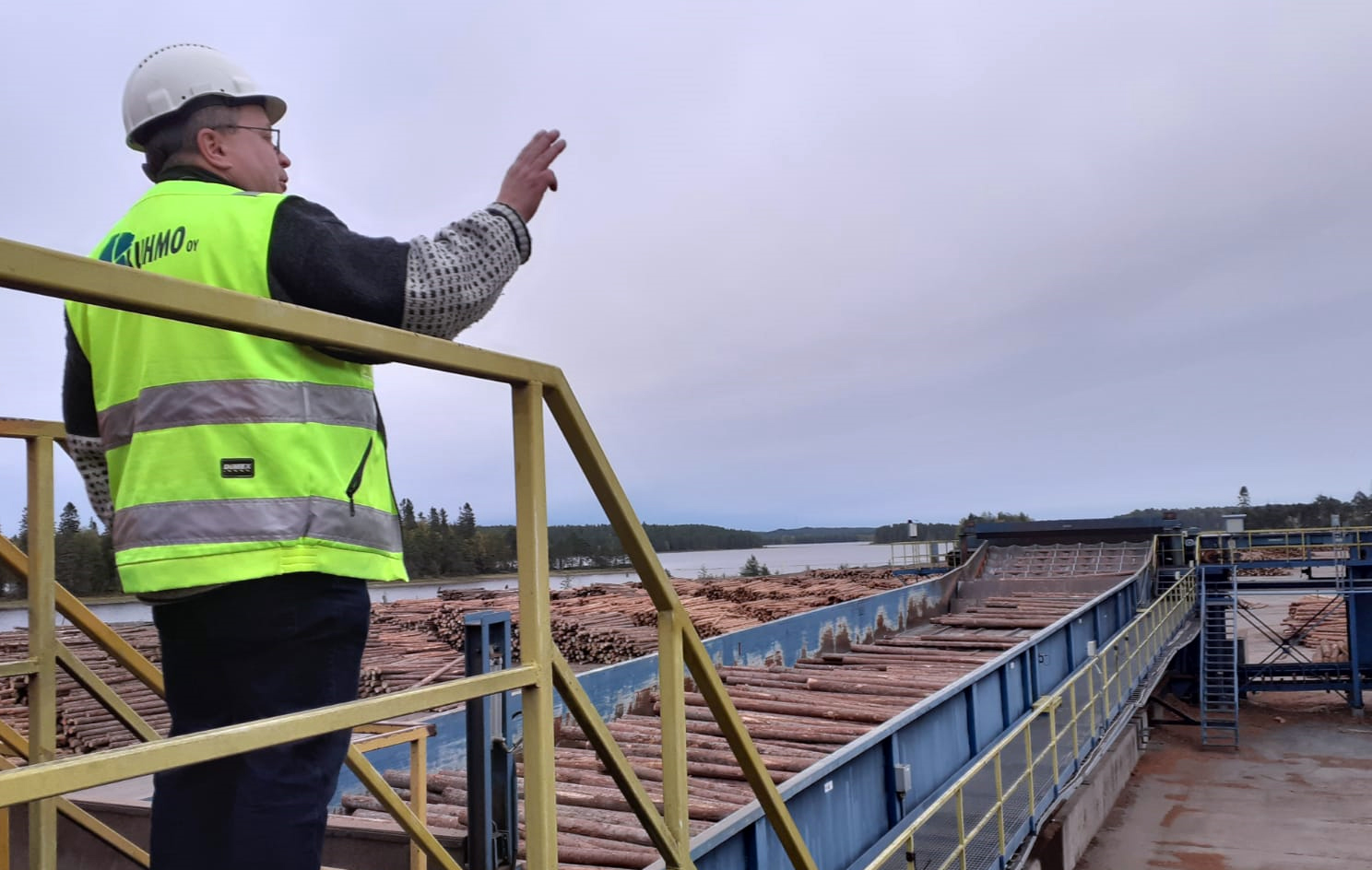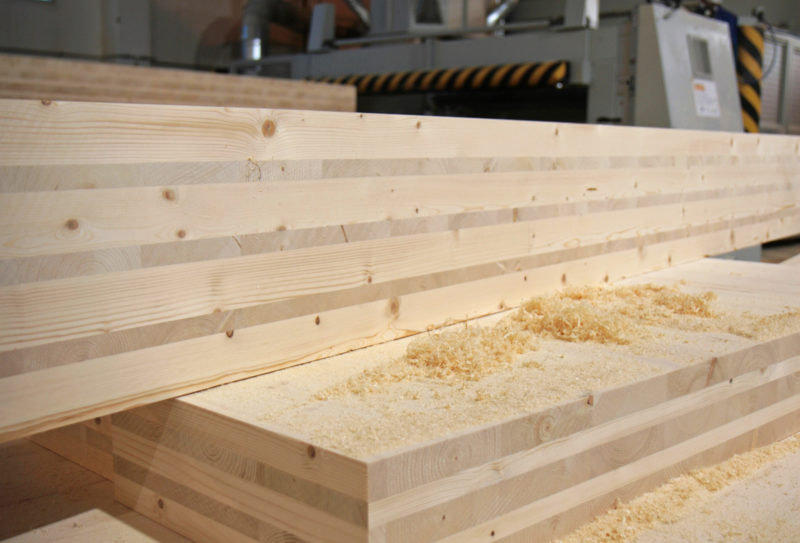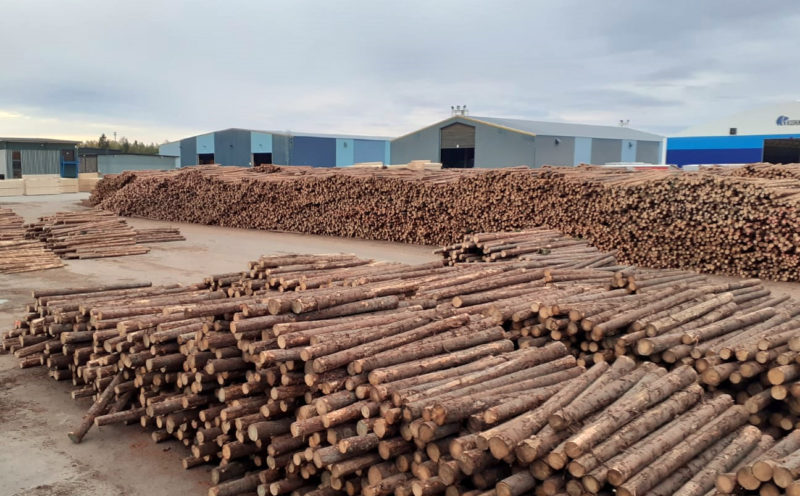
Kuhmo, like many Finnish forestry towns, had been wondering why its sawmill had not developing its products further. They realised that they needed entrepreneurs with vision, so, with the firm support of the city, the Woodpolis innovation cluster was born.
The Kantola business district in Kuhmo looks just like the many other industrial estates found all over Finland. However, Kantola’s factories produce a surprising volume of wood products – sawn timber, Cross laminated timber (CLT) slabs, flat and modular elements, log houses, and wood construction design services, planed timber and windows and doors – worth a total annual turnover of 100 million euros.
The source of the cluster’s buzzing activity lies just beyond the industrial area – the forest. This small town in Kainuu is surrounded by huge swathes of boreal forest and, for over six decades, Kuhmo’s sawmill has been instrumental in processing this local, raw material.
It was speculated that the more that this wood supply was processed locally, the more local jobs and prosperity would be created. Therefore, the city of Kuhmo wanted to extract more from the forest than just lumber. It founded Woodpolis in order to promote innovation in wood construction as well as to educate companies and students in the field.
Tytti Määttä, the Mayor of Kuhmo, explains how the sustainable use of the forests is everyday life for Kuhmo residents. Video: Hannes Mäntyranta
The Woodpolis wood products cluster consists of a dozen companies, including the sawmill, and this business network supports the further processing of wood, which has been difficult to develop in a sector with traditionally low margins.
“In Kantola you can find almost everything related to wood construction,” says Juha Virta, CEO of Crosslam, a manufacturer of CLT boards.
Student housing companies form the vanguard
The results of innovative thinking in Kuhmo will soon be seen in the Finnish capital region in Espoo, where Elementti Sampo, a company based in Kantola, is under contract to deliver Finland’s largest and tallest block of flats constructed of wooden modular elements. The Foundation for Student Housing in the Helsinki Region (HOAS) has commissioned a 13-storey, 165-unit residence called Tuuliniitty.
The building will be assembled from components made at the Elementti Sampo plant. On arrival at the site, the components will be complete with all electrical, heating and plumbing installations and interior details.
Before this, however, the company will build an eight-storey student dormitory in Rovaniemi in Lapland. In fact, companies commissioning student housing appear to be in the vanguard of using wooden modular elements for their buildings.
Modular elements consisting of one, two or three rooms and a kitchen are constructed at the Elementti Sampo plant. Assembling the elements at the construction site is much like stacking toy building blocks on top of and next to each other.
Instead of outdoors, builders work indoors
In 2018, Elementti Sampo manufactured 247 flats for several buildings across Finland. With the current capacity, three to five blocks of flats can be completed per year. The company employs 65 people.
There are many benefits in this construction method. Work at the actual construction site is significantly shortened. A one-family house can be finished up to the roof in 24 hours, and one floor of a block of flats takes no longer.
The modular method also reduces costs and the risk of damp, and it also improves the quality of work as the modules are built indoors. What is more, much of the work can be carried out in rural areas, which reduces both rural unemployment and excessive demand for labour in urban areas.
However, Elementti Sampo would not be successful without Crosslam, which makes cross laminated timber (CLT) board on an adjacent site.
CLT functions as both an interior and exterior panel and a load-bearing structure. It also insulates heat – with an exterior wall panel of 260 millimetres’ thickness, no other insulation is needed. Additionally, CLT board can be cut and shaped as needed, allowing for window and door openings and through holes to be made already at the factory.

The load-bearing capacity and stiffness of the CLT panel are even enough for the construction of an elevator shaft. ’A CLT module is as rigid and strong as a concrete module, but has only a fifth of the weight,’ says Virta. In addition, CLT acts as a moisture barrier because it is completely weatherproof yet breathable.
The Kantola wood cluster is not a gold mine, but the wood construction industry in Kuhmo is starting to turn a profit. Elementti Sampo, for example, expects this year to be profitable. This is the result of investments and goal-minded development work.
Above all, new industries need examples of successful production, which is why the town of Kuhmo commissioned a showcase project from its cluster: the Tuupala School Centre made of Crosslam’s CLT.
The sawmill is the heart of forest bioeconomy
The cluster would, however, be nothing without the sawmill operating in Kantola – also named Kuhmo. There is a saying in Kuhmo that the sawmill is the beating heart of the forest bioeconomy, and the logs are its blood. This means that the sawmill drives the wood to its different destinations – be it sawlogs, pulpwood or energy wood.
The main purpose of forestry in Finland is to grow good quality logs. Forest owners can derive up to 70 percent of their timber revenue from the sale of logs.
As logs are felled from a forest stand, smaller wood is felled at the same time for pulp and energy production, which also uses chips and sawdust from the sawmill. Although the largest added value within the forest industry is created in the pulp, paper and carton industry, it would soon be in trouble if the sawmilling industry did not keep the raw wood material on the move.
The Kuhmo sawmill is of great importance to the town. It used to be said that the town of Kuhmo received three more or less equal flows of cash from outside its boundaries: government subsidies, unemployment benefits and what the Kuhmo sawmill brought in. In more recent times the sawmill income has only increased relative to the other two.
Finnish sawmilling is an export industry
The local wood product cluster is important for the Kuhmo sawmill, yet its main market is elsewhere. Sawmilling in Finland is an export industry and the Kuhmo sawmill’s main export areas, after a domestic share of 39%, are North Africa, the European Union, China and Japan.
These shares do not change easily. ’If the share of residential wood construction in Finland rose to 30% from the current rate of 5%, it would still make up only 1.5 percent of the Finnish sawmill production,’ says Virta.
Therefore, the Kuhmo sawmill must succeed in its export. Problems in export trade would mean that the mill would lose its business, and Crosslam, Elementti Sampo and the rest of the wood-processing cluster in Kuhmo would lose their local source of sawmilling products.
The biggest problem with exports is that Kuhmo is far from the rest of the world. ’Wood from our Swedish competitors begins its journey hundreds of kilometres closer to the market, somewhere near the Danish Straits perhaps. We need to be better at something else to offset our freight up to there,’ says Tommi Ruha, CEO of the Kuhmo sawmill.
Yet the location does have some advantages, such as high-quality and easily obtainable raw material. The Kuhmo sawmill purchases 800,000–900,000 cubic metres of raw wood per year, which corresponds to 16,000–18,000 modern 76-tonne full-trailer lorries.
However, the wood cluster in Kuhmo does not consist of industry alone. It also includes a great number of ordinary family forest owners, who share in the revenue brought in from all corners of the world by the cluster’s heart – the sawmill.

forest.fi 15.12.2016: Co-operation to produce innovations in the northern forest
forest.fi 30.11.2016: How to build eco-friendly and local: A showpiece from Eastern Finland
